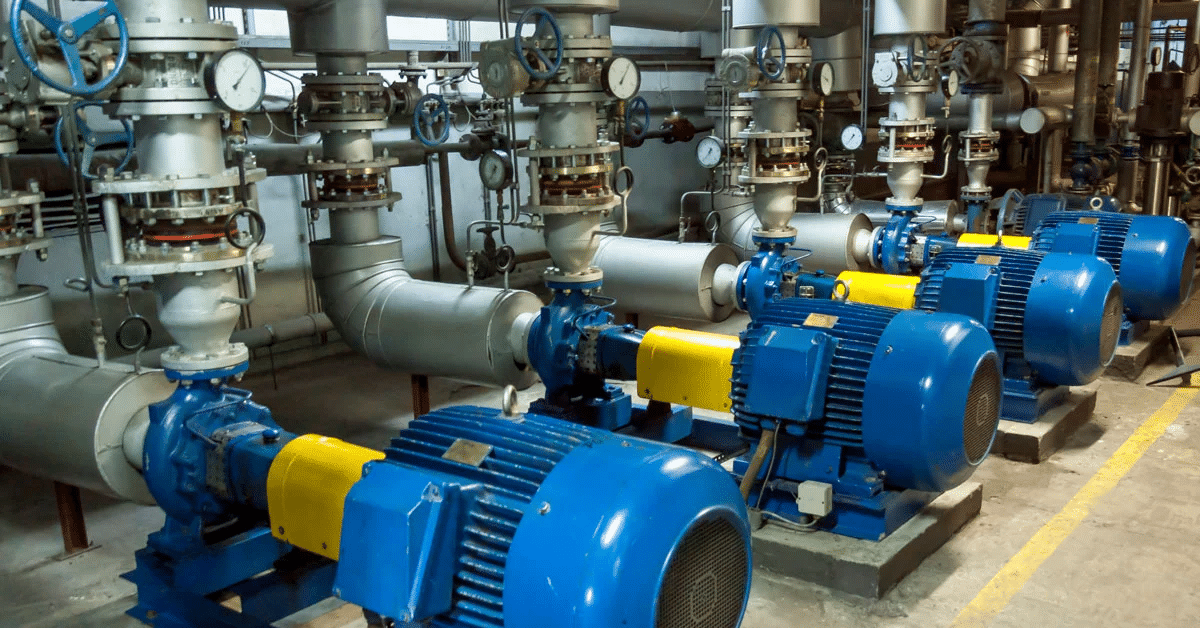

Situation
The biological wastewater treatment step is the largest energy consumer of all process steps at a municipal wastewater treatment plant. The treatment is a complex interaction, which can be very sensitive to change of pH, oxygen concentration in the water, and temperature. Process experts at a European wastewater treatment plant wanted to improve their maintenance schedule for the aeration elements of biological wastewater treatment. Because the aeration elements suffer from fouling, they need to be cleaned regularly. Oxygen concentration decreases when aeration elements are fouled, and the treatment no longer works efficiently. The goal was to transition to maintenance planning from a time-based schedule. However, the high variance of variables made it difficult to have a clear indicator.

In the biological reactor, the pressurized aeration system delivers oxygen for the bacteria. A low concentration of Oxygen is one factor which can lead to a high concentration of nitrite.
Problem
Wastewater treatment plants must overcome high-input variances of incoming wastewater, which can vary depending on the time of day, the time of year, and weather conditions. Engineers need the information associated with those changes to schedule planned maintenance. However, getting a clear indicator that the aeration elements of the biological treatment needed to be cleaned was extremely difficult.
Solution
Approach
- Build tags in TrendMiner to correspond with oxygen concentrations over time
- Create a dashboard in DashHub that allows process experts to see all the oxygen concentrations across the various aeration elements
- When the oxygen concentration drops during the nitrification process, then the aeration elements needed to be cleaned
Results
- Engineers had a full view of the aeration elements and their corresponding oxygen concentrations during the nitrification process
- Process experts used the monitor in DashHub to determine when aeration elements needed to be cleaned based on their oxygen concentration levels
- The monitors allowed engineers to take a “just-in-time” maintenance approach that saved money in maintenance and energy costs
Situation
The biological wastewater treatment step is the largest energy consumer of all process steps at a municipal wastewater treatment plant. The treatment is a complex interaction, which can be very sensitive to change of pH, oxygen concentration in the water, and temperature. Process experts at a European wastewater treatment plant wanted to improve their maintenance schedule for the aeration elements of biological wastewater treatment. Because the aeration elements suffer from fouling, they need to be cleaned regularly. Oxygen concentration decreases when aeration elements are fouled, and the treatment no longer works efficiently. The goal was to transition to maintenance planning from a time-based schedule. However, the high variance of variables made it difficult to have a clear indicator.

In the biological reactor, the pressurized aeration system delivers oxygen for the bacteria. A low concentration of Oxygen is one factor which can lead to a high concentration of nitrite.
Problem
Wastewater treatment plants must overcome high-input variances of incoming wastewater, which can vary depending on the time of day, the time of year, and weather conditions. Engineers need the information associated with those changes to schedule planned maintenance. However, getting a clear indicator that the aeration elements of the biological treatment needed to be cleaned was extremely difficult.
Solution
Approach
- Build tags in TrendMiner to correspond with oxygen concentrations over time
- Create a dashboard in DashHub that allows process experts to see all the oxygen concentrations across the various aeration elements
- When the oxygen concentration drops during the nitrification process, then the aeration elements needed to be cleaned
Results
- Engineers had a full view of the aeration elements and their corresponding oxygen concentrations during the nitrification process
- Process experts used the monitor in DashHub to determine when aeration elements needed to be cleaned based on their oxygen concentration levels
- The monitors allowed engineers to take a “just-in-time” maintenance approach that saved money in maintenance and energy costs
Subscribe to our newsletter
Stay up to date with our latest news and updates.
Other Webinars on demand
Explore Our Newest Content to Maximize Your Operational Efficiency
Other Resources
Explore Our Newest Content to Maximize Your Operational Efficiency



.jpg)
.jpg)
.jpg)






